Letters from Lodi
An insightful and objective look at viticulture and winemaking from the Lodi
Appellation and the growers and vintners behind these crafts. Told from the
perspective of multi-award winning wine journalist, Randy Caparoso.
Story of an appellation—Part 10, Lodi's modern day winemaking leaders
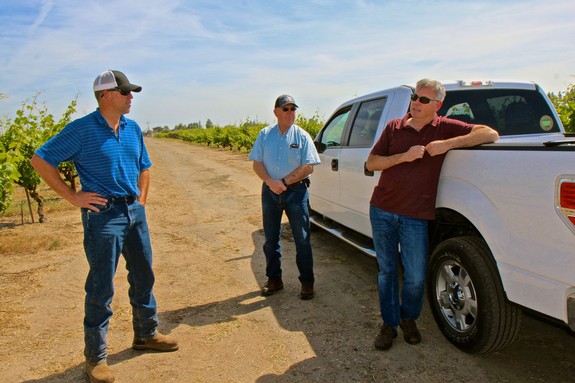
Modern-day Lodi dream team: (from left) Bruce and Jerry Fry of multi-award-winning Mohr-Fry Ranches with Stuart Spencer, owner/winemaker of St. Amant Winery and current Executive Director of Lodi Winegrape Commission.
Continued from Story of an Appellation—Part 9, the modern era, when Lodi families of German lineage took control
St. Amant Winery
Tim Spencer (1938-2006), who founded St. Amant Winery with his wife Barbara in 1972, was not just one of Lodi's pioneering vintners. He will always be remembered as one of Lodi's most inspiring winemakers/growers, exerting an influence still talked about today.
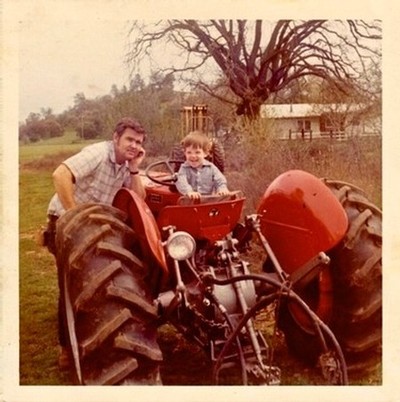
Old snapshot of St. Amant Winery founder Tim Spencer (1938-2006) with his son Stuart. Courtesy photo.
Since its first bottling in 1999, the St. Amant Zinfandel from Marian's Vineyard, a 1901 block owned and grown by the Fry family of Mohr-Fry Ranches, has remained among the single most important vineyard-designate Zinfandels—not just in Lodi, but for all of California. If there is any one wine that has proven that Lodi can be considered among the "best" in the world, it is Marian's.
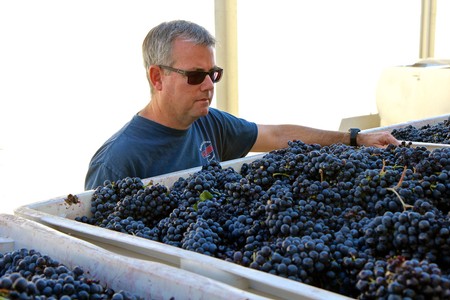
St. Amant's Stuart Spencer with a recent Marian's Vineyard Zinfandel harvest.
During their early years, the Spencers specialized primarily in fortified wines made from select Portuguese grapes grown in their own vineyard in nearby Amador County. By the early 2000s, their lofty reputation became more strongly associated with their exceptional old vine Zinfandel and Barbera grown in Lodi. Today, Tim and Barbara's son Stuart Spencer wears two hats, as executive director of the Lodi Winegrape Commission and owner/grower/winemaker of St. Amant Winery.
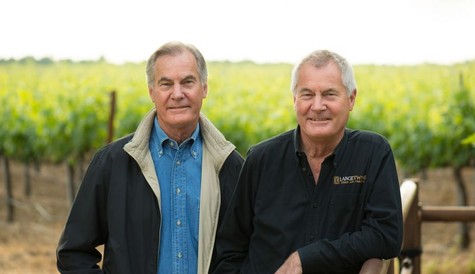
LangeTwins Family Winery & Vineyards founders Brand and Randy Lange. Courtesy photo.
LangeTwins Family Winery & Vineyards
Although they did not establish LangeTwins Family Winery until 2005—over 125 years after their German-born great-grandparents arrived from Germany—the identical twin brothers Brad and Randall Lange epitomize the Lodi story.
The Lange family transitioned from watermelon and other crops to grapes in 1916, and during the 1980s they began working closely with the Mondavis as growers, playing an active role in the entire region's transition to premium grape varieties (for further details, see our post on Story of an appellation—Lodi's shift to premium grapes and the first wave of independent wineries).
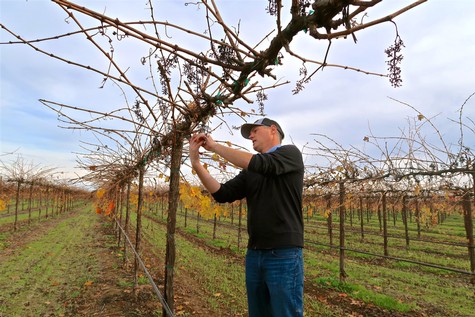
Fifth generation Lodi grower Aaron Lange in one of his family's more innovative vineyards (single high wire Cabernet Sauvignon) in Lodi's Jahant AVA.
Today LangeTwins Family Winery & Vineyards is one of the largest vineyard owners and vineyard management companies in Lodi, while also operating a large-scale, state-of-the-art winery for both their own labels and as a custom crush facility. As one of Lodi's strongest proponents of sustainability—particularly their work on riparian restoration and beneficial insect hedgerowing—the Langes' operations are now led by a fifth generation, who of course is in the process of raising a sixth.
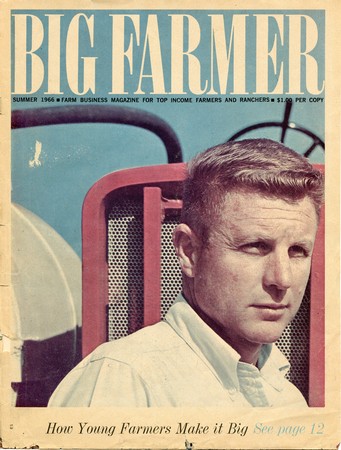
1966 Big Farmer cover photo of a young John Kautz, just before committing the family's resources primarily to wine grapes.
Ironstone Vineyards
Although their winemaking facility is located in Murphys in Calaveras County, the Kautz family of Ironstone Vineyards has played a huge role in the Lodi winegrowing industry. Frederick and Maria Kautz, the parents of Ironstone's current family patriarch John Kautz, first came from Germany to start their Lodi farming operations in 1940.
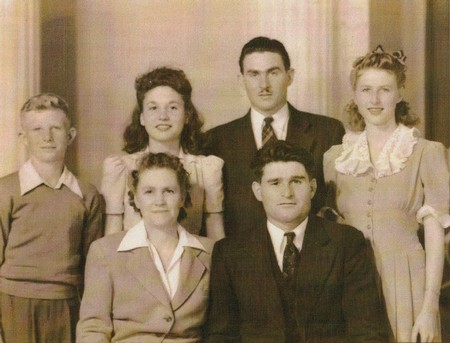
The Kautz family in the early 1940s: John Kautz (left, born in 1930), with siblings Esther, Fred, and Wilma, and parents Maria and Frederick (front). Courtesy photo.
John Kautz re-focused the family business on grapes in 1968. Over the past fifty years, Kautz Farms' vineyard operations have expanded to over 7,000 acres throughout the Lodi appellation, as well as in the neighboring Sierra Foothills AVA. Mr. Kautz, in fact, is credited for being the first Lodi grower to plant Chardonnay in the region.
While the Kautz family is still largely a supplier of grapes to other wineries, in 1988 Mr. Kautz and his wife Gail (along with their children, Stephen, Kurt, Joan, and Jack) built their state-of-the-art winemaking facility in Murphys.
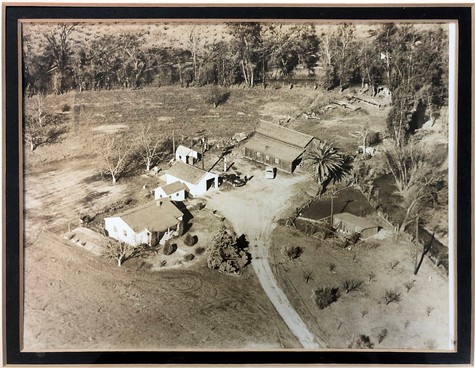
The original Kautz family home in Lodi, flanked by spur-pruned grapevines. Courtesy photo.
Much like the Langes of LangeTwins Family Winery & Vineyards, large-scale Lodi grape-growing companies such as Kautz Farms have found that supplying wine grapes is not enough—they must also offer winemaking services to winery clients. Thus, in 1997, the Kautzs purchased Bear Creek Winery, a former co-op facility from which the family operates its custom crush business. It is their own Ironstone Vineyard brand, however, that is sold across the country and all around the world, playing a significant part in the dramatic growth and increasingly positive profile of Lodi appellation wines.
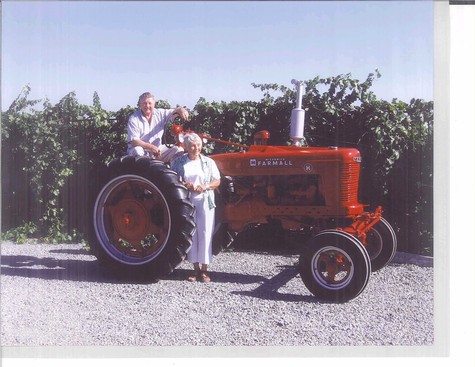
Ironstone Vineyards' John and Joan Kautz. Courtesy photo.
Jessie's Grove Winery
Jessie's Grove Winery, owned and operated by the descendants of pioneer Lodi grower Joseph Spenker, has followed a similar business plan as a major grape supplier while also starting up as a winery in 1998 in order to do custom crushing as well as a modest production of their own wines, sold primarily at the door under the Jessie's Grove label.
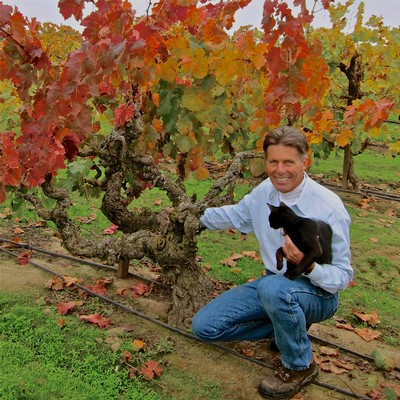
Greg Burns, Jessie's Grove Winery—owner/grower/winemaker and great-great-grandson of founder Joseph Spenker—with ancient vine Carignan originally planted in 1889.
While during its early years, the brand was known for somewhat rustic styles of wine, the profile of Jessie's Grove label wines has been significantly updated just over the past two, or three years. Besides the distinction of being sourced from their own vineyards which also happen to be the most historic in the appellation—including Lodi's oldest Zinfandel (planted between 1889 and the 1940s), Cinsaut (1886), and Carignan (1900) plantings—they are now crafted to retain a distinctive sense of place in the vein of many of the best contemporary style wines.
Macchia Wines
It is true that, for the most part, the image of Lodi wineries is still primarily associated with families who have been farming in the region for several generations. Still, as in other California appellations, the number of small, independent, handcraft wineries without this long historic lineage is bound to grow. Albeit, in Lodi, in modest proportion, since Lodi is still primarily a homegrown farming region, not so much an appellation where new, enterprising winery owners are anxious to set up shop.
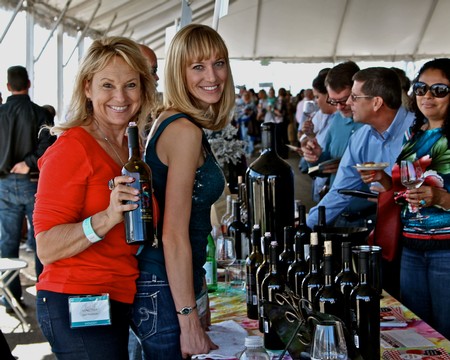
Macchia Wines owner Lani Jean with daughter Tanya McMahon.
In the latter vein, full credit goes to Macchia Wines, founded in 2001, for being one of those "newcomer" independents who have helped forge Lodi's growing reputation for handcraft wines; especially bottlings made from vineyard-designate heritage growths which (thank goodness!) are more popular than ever.
Stylistically, Macchia remains somewhat of a hardliner: If you prefer deeply pigmented, intensely aromatic, unrepentantly full-bodied, and generously oaked renderings of Lodi-grown Zinfandel or Barbera, you can always rely on this brand for that particular style.
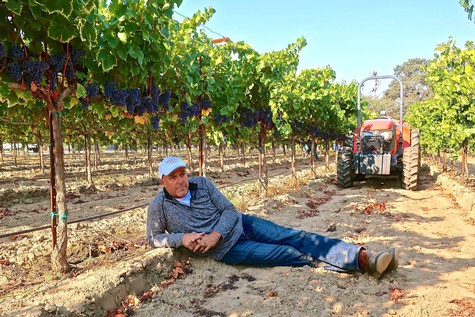
McCay Cellars owner/grower/winemaker Mike McCay taking a brief break during a Grenache harvest.
McCay Cellars
McCay Cellars is another handcraft independent that has been playing a huge role in the more emerging tale of Lodi as the place to find terroir-focused wines, many of them made from venerated old vine sites. The way owner/grower/winemaker Mike McCay tells his story:
I made my first Lodi wine in my garage, in 1994, with Rich and Bob [Lodi growers Richard and Robert Lauchland]. It was actually more of a competition—the three of us made a bet about who can make the best wine every year. I wanted to win so badly that I started studying, and reading every book on winemaking I could find. I started bugging Craig Rous [Lodi grower who, at the time, was the winemaker at Bear Creek Winery, and a former Woodbridge by Robert Mondavi Winery winemaker]. Probably drove him crazy with my questions.
I got into grape growing in 1995 when we purchased our Bruella Road home. In the beginning, I made only 50, at the most 100 cases a year. I wasn't licensed to sell any of it until 2007 when McCay Cellars was officially launched, but the impetus was definitely people asking every year, "Do you have any more wine to sell?"
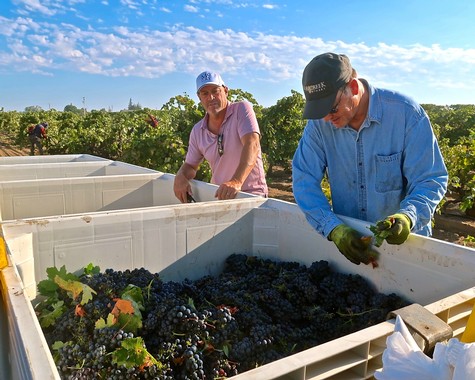
Mike McCay and Craig Rous (right) harvest Rous Vineyard Zinfandel, originally planted in 1909.
Let's just say that, before officially establishing his brand, Mr. McCay was obliged to "give away" his bottlings to a growing number of loyal followers. He developed this following because of his reverence for Lodi vineyards. That is to say, McCay is more interested in wines that taste as they come from Lodi than wines that are made to be comparable to that of other regions. Therefore, from the start, the style of wines defining the McCay brand has fallen in the low intervention, native yeast, neutral oak aged vein defining many of the "natural" wines (in the U.S., a loosely defined unofficial category that nonetheless has its fans) of today.
Not surprisingly, in 2012 McCay was one of the six vintners who were part of the Lodi Native project—minimal intervention Zinfandels focused on the taste of vineyards rather than brands or varietal character—although he has also championed Grenache, Tempranillo, and Carignan for the same reasons: The natural suitability of these grapes to Lodi's Mediterranean climate and sandy soils, all sustainably grown.
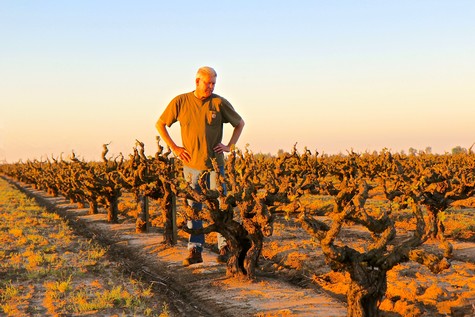
m2 owner/winemaker Layne Montgomery in Soucie Vineyard, Zinfandel planted in 1916.
m2 Wines
Perhaps the most iconic of the modern-day Lodi vintners is Layne Montgomery, owner/winemaker of m2 Wines. The winery was named "m2" when it was founded in 2004 because, as Montgomery explains, "I had a partner whose name also started with an M, but he dropped out as soon as he discovered how hard this business is."
Another well-known Montgomery-ism is his oft-told opinion that aging Zinfandel in French oak is like "putting lipstick on John Wayne." Never mind the fact that French oak has proven to be extremely amenable to Lodi's delicate, floral style of Zinfandel—the more aggressive taste of oak from American forests has the tendency to clobber this taste—but Montgomery's allegiance to American oak barrels makes perfect sense because of the vineyard to which he has hitched his wagon: The Soucie Vineyard, an ancient vine site (planted in 1916) farmed by three generations of Soucies on the farthest western edge of the Mokelumne River-Lodi AVA. Soucie produces arguably the richest, earthiest, and potentially most voluminous Zinfandel in the entire appellation. A "John Wayne" style of wine.
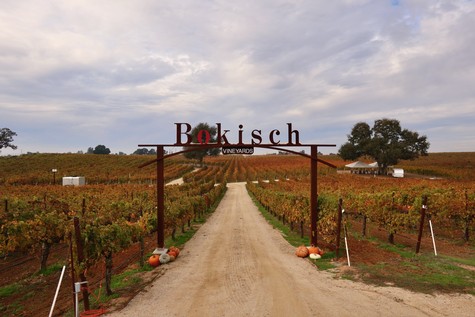
Bokisch Vineyards' Terra Alta Vineyard in Lodi's Clements Hills AVA, is farmed both organically and sustainably.
Bokisch Vineyards
Last but far from least among the modern-day Lodi pioneers are Markus and Liz Bokisch of Bokisch Vineyards. Although the Bokischs have been known to produce heritage varietals such as Zinfandel, Carignan, and (most recently) Cinsaut, what they have been known for since their first vintage in 2001 are Spanish varietals: Albariño, Tempranillo, Graciano, Garnacha, and Garnacha Blanca—most of these wines crafted from plant material brought into the country by the Bokischs themselves.
This, in turn, has resulted in something of a revolution in the Lodi AVA. Almost every Lodi winery of significance now produces at least one of these varietals, and for good reason: These grapes have proven to be as readily adaptable to the terroir as Zinfandel.
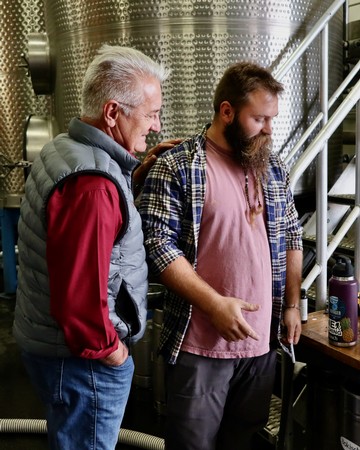
Bokisch Vineyards owner/grower Markus Bokisch with his cellarmaster/son Stefan.
Over the past 28 years, Bokisch Vineyards as a business entity has undergone permutations. At one point (up until just five years ago), they had grown as a vineyard investment and management company to the point where they were farming over 2,500 acres of grapes in four counties, and selling grapes to as many as 60 wineries, big and small.
The Bokischs have since pulled back from vineyard management and are now focused on what they feel they do best: Producing and marketing Spanish-inspired wines, primarily from their own vineyards. This has allowed them to double down on sales, marketing, and guest services, which are stronger than ever.
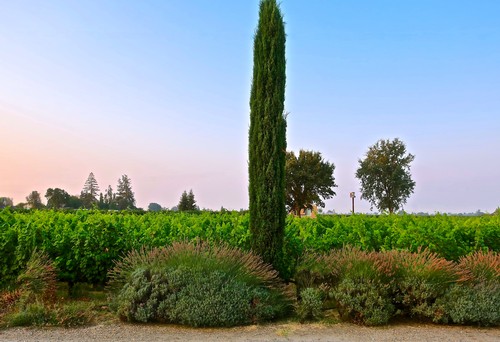
Bokisch Vineyards' Las Cerezas Vineyard Graciano in Lodi's Mokelumne River appellation.
If not the finest Spanish-style wines in the country (although a case can be made for that), the wines of Bokisch Vineyards are at least among the most influential—exerting a direct impact on the tastes of not just Lod wine lovers, but also on the palates of domestic wine lovers everywhere.
The Bokischs, in short, have demonstrated that exceptional wines can be grown, produced, and successfully sold from grapes that are easily adapted to a region, whether or not consumers are familiar with those grapes and wines. Thanks to the Bokischs, many of them now are!
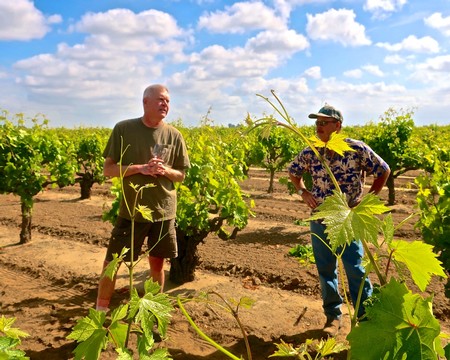
m2's Layne Montgomery with third-generation grape grower Kevin Soucie in Mokelumne River-Lodi's Soucie Vineyard.